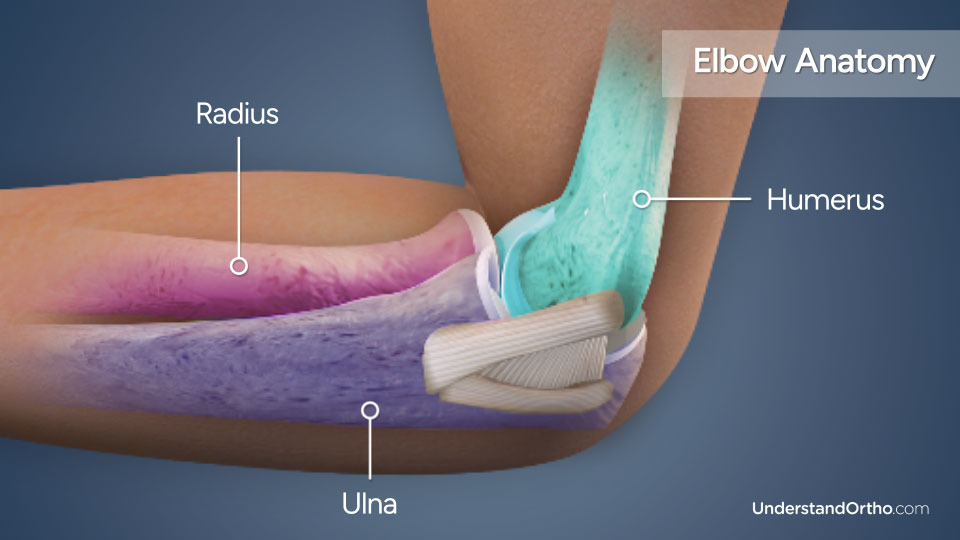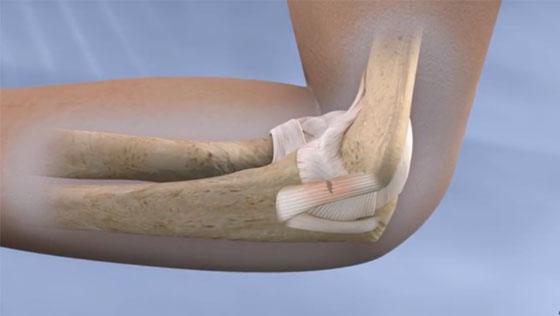What is Elbow Arthroscopy?
Elbow arthroscopy is a minimally-invasive surgical procedure performed to identify and treat disease or damage inside the elbow. A camera attached to an instrument called an arthroscope is utilized during the procedure.
Key statistics about Elbow Arthroscopy
- Arthroscopic elbow procedures are commonly performed on middle-aged patients with degenerative elbow disease[1]
- 71% of elbow arthroscopies are performed on men[1]
- In comparison to traditional open elbow surgery, the benefits of elbow arthroscopy are: less pain and swelling after surgery, decreased risk of infection, less scarring, and a faster return to both work and sport[2]
Expert Insight
Understanding Elbow Arthroscopy - Jason Klein, MD
Why is Elbow Arthroscopy performed?
Elbow arthroscopy is performed primarily to identify and relieve elbow pain associated with damage to cartilage, bone or soft tissue of the elbow. Problems may include:
- Arthritis
- Dislocation
- Loose bodies
- Bone fractures
- Tennis elbow
Elbow arthroscopy utilizes small incisions rather than the large incisions used in traditional open elbow surgery. Elbow arthroscopy patients typically experience less pain and faster recovery times than individuals who undergo open elbow surgery.
Elbow Anatomy
The elbow joint is formed by three bones: the humerus, the ulna, and the radius. Articular cartilage covers the ends of the bones, allowing them to glide smoothly against one another.
The elbow is also made up of many muscles, ligaments, tendons, nerves, and blood vessels.

Who needs Elbow Arthroscopy?
Individuals who have sustained an injury or degenerative condition of the elbow that has not responded to nonsurgical treatment may undergo elbow arthroscopy.
How is Elbow Arthroscopy performed?
- The surgeon will make small incisions around the elbow and the arthroscope will be inserted into one of the incisions.
- Saline solution is pumped into the elbow to expand it and improve visualization.
- Images from the arthroscope are sent to a video monitor where the surgeon can see inside the joint.
- Using the video monitor as a guide, the surgeon will locate the problem area and make a diagnosis.
- Surgical repairs will be completed through the small incisions, or through a larger incision if necessary.
- Finally, the saline solution is drained, instruments are removed, and the incisions are closed using sutures.
What are the risks of Elbow Arthroscopy?
Potential risks from elbow arthroscopy may include:
- Infection
- Blood clots
- Nerve or blood vessel damage
How long does it take to recover from Elbow Arthroscopy?
-
24 hours after surgery
Most patients are able to return home the same day as their procedure. Pain medication may be prescribed and a splint, sling, or brace may be provided to immobilize the elbow. -
1-3 days after surgery
The affected elbow should be iced and elevated. -
2 weeks after surgery
Any non-dissolvable sutures are removed and bruising and swelling begin to subside.
What are the results of Elbow Arthroscopy?
Elbow arthroscopy is a minimally-invasive procedure that typically has a faster recovery time and fewer complications than open elbow surgery. Ultimately, the results of elbow arthroscopy depend upon the specific diagnosis and treatment.
Find an Orthopedic Doctor in Your Area



